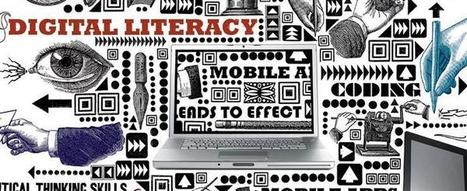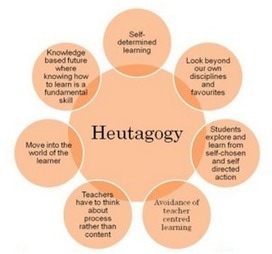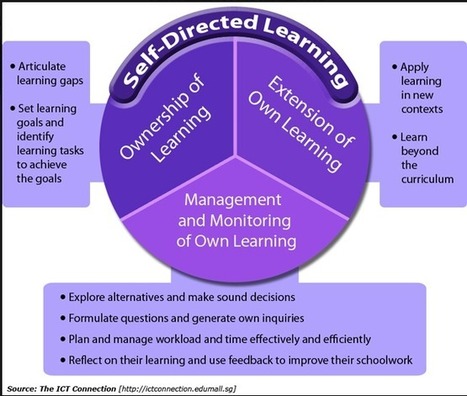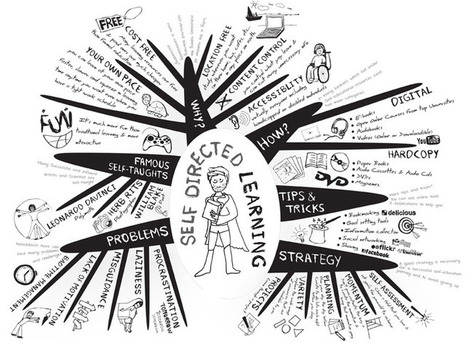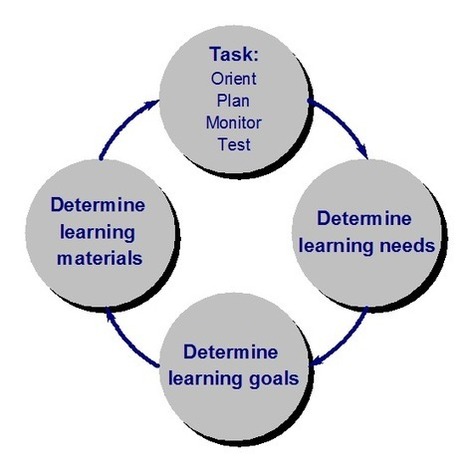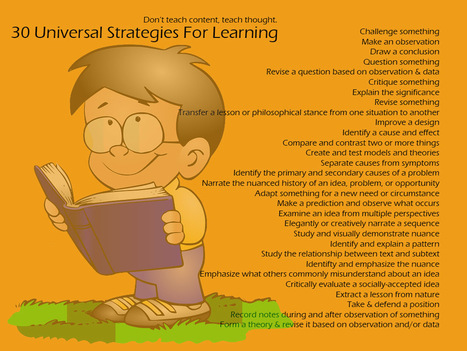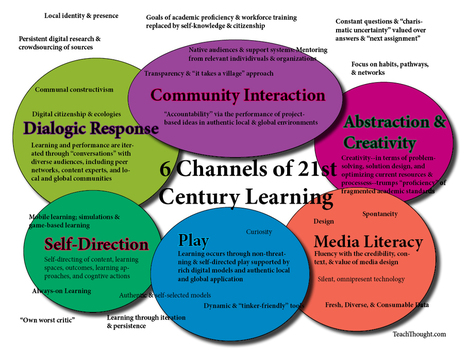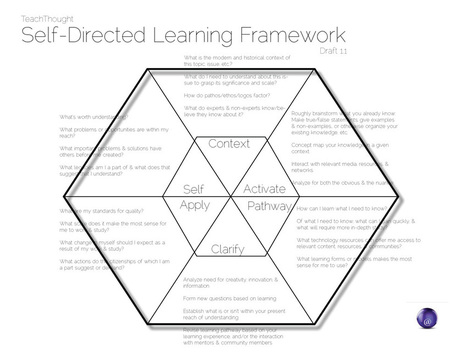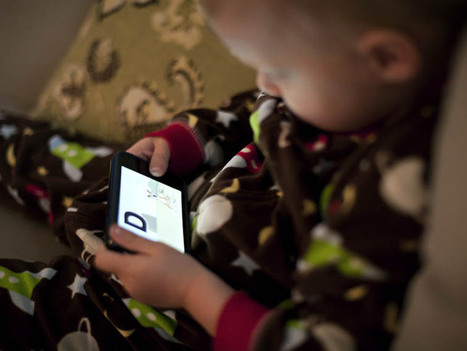 Your new post is loading...
 Your new post is loading...
- Bill Gates, Mark Zuckerberg, and Ellen DeGeneres all dropped out of college, yet they became leaders in their fields. Their secret? Self-directed learning.
- Self-directed learning can help people expand their knowledge, gain new skills, and improve upon their liberal education.
- Following habits like Benjamin Franklin's five-hour rule, the 80/20 rule, and SMART goals can help self-directed learners succeed in their pursuits.
Both the 21st-century economy and the careers needed to fuel it are changing at an unprecedented rate. Students must be prepared for nonlinear careers, pivoting to match the ever-changing work landscape. We thus need to rethink not just how we teach our students but what we teach our students.
Via Peter Mellow
Heutagogy is a learning and teaching approach that is primarily self-directed or self-determined. Unlike the traditional pedagogic paradigm where learning is administered in a controlled environment under the auspices of a ‘knowledge expert’ (teacher) and where learners agency is defined in the logic of conformity and passive adhesiveness to pre-defined instructional guidelines, a heutagogic pedagogy is more learner entered.
Via Educatorstechnology
You don't have to get a new degree to expand your knowledge base.
6 Principles Of Genius Hour In The Classroom Genius Hour in the classroom is an approach to learning built around student curiosity, self-directed learning, and passion-based work.
One of the key points I made in my keynote was that the future of education will be both richly social and intensely personal. This might sound like a paradox, but essentially, with all the digital tools we now have at our disposal, we can connect like never before, and create our own powerful social networks. Simultaneously, we can manipulate the tools we have at our disposal to create our own individual learning pathways, select our own personal preferences, and devise our own collections of resources. [Including Digital age learning - slide deck]
Firstly, thanks to @helencrump for the title of this post. The alternative title was ‘#oldsmooc - the MOOC that keeps giving”. But I think Helen’s one sounds much more impressive :-) I’m not quite ...
Are universities on the verge of disappearing? Is online learning going to take over classroom education? How can we get the most out of the new available tools for online learning? Here are some s...
This is a continuation of my short series of blog posts on mobile learning. In previous posts I have argued that mobile learning is increasingly popular as an informal activity, and that personalisation of learning is an important characteristic of smart phone use. We are a now mobile, itinerant society where tethered computing is becoming increasingly anachronistic.
It was posted as the introduction to Learn Camp, a self-directed learning programme from the Central Ohio ASTD chapter that aims to let learners explore some of the new digital tools that are changing access to information and ways of learning today. The activity along with this, labelled ‘discovery exercise’, was simply to share your thoughts about which habit is easiest for you, and which is the hardest, plus any thoughts you might have about lifelong learning in general. From Helen Crumps blog at: http://learningcreep.wordpress.com/2013/06/28/habits-for-successful-lifelong-learning-coastd/
What You Need To Know About Self-Directed Learning
When a teacher's goal is to enhance students' capacity for self-directedness, the how and why of providing feedback is crucial. Here are five forms of feedback, presented in descending order of their effectiveness in growing self-directedness.
|
Mirjam Neelen & Paul A. Kirschner Employees must constantly learn, improve, and adapt to economic, societal and technological changes in order to not become obsolete - mostly because where they work continually change their work practices in order to be more productive and/or competitive. This learning can be formal, non-formal or informal (see for example…
Via Leo Havemann
30 Universal Strategies For Learning As teachers, we’re all trying to better understand how people learn–not now they’re taught in terms of teaching strategies, but more so learning strategies–only not really strategies. Learning actions, or cognitive actions. Strategies for learning. Self-directed and social learning will undoubtedly be at the core of any sort of future learning–both near and far future. But to improve learning in both self-directed and teacher-centered learning environments, it can be illuminating to look past the activities, projects, and courses to try to see what sort of brain-level actions learners are performing. Like push-ups, wind sprints, and weight training are physical actions that help train an athlete’s body, what kind of cognitive actions train a learner’s mind?
Self-education and the embrace of lifelong learning is becoming a critical mindset to navigate our rapidly changing world. Lifelong learning can be a catalyst for earning more money in your career and it can be a gateway to self-employment. Fortunately, the Internet has made it easier than ever to find the right resources to spark your curiosity and learn what you need to know. In this post, I have compiled some of the most useful self-education resources that I've found online. You will find online courses and tools to master new skills, learn languages, find classic books, broaden your mind and interact with other lifelong learners.
Taking apart the idea of school as we know it and getting back to the roots of children and learning is a pervasive thought which I am constantly researching and evaluating. There is no shortage of pedagogies out there but there seems to be a lack of application of relevant methodologies for out of the…
Any human anywhere will blossom in a hundred unexpected talents and capacities simply by being given the opportunity to do so. Doris Lessing It’s the summer term and the sun has finally come out to...
What is 21st century learning, and how do networks and technology function within it? At TeachThought, we constantly wrestle with two big questions: How do people learn, and how can they do it better in a constantly evolving context? In pursuit, the theme of “21st century learning” often surfaces, a popular label that, while perhaps cliche, still seems to be necessary as we iterate learning models, fold in digital media resources, and incorporate constantly changing technology to an already chaotic event (i.e., learning). This has produced our 9 Characteristics of 21st Century Learning, a kind of overview we created in 2009, and our Inside-Out School model that is meant to be a kind of bridge between current school design and what’s possible moving forward.
A Self-Directed Learning Model For 21st Century Learners The above is the latest draft of our self-directed learning framework, version 1.1. It is based, in spirit, on our Inside-Out School: A 21st Century Learning Model. It is intended to function as a guide for students–likely with the support and facilitation of teachers, parents, and mentors–to help students become expert learners. The goal of the model isn’t content knowledge (though it should produce that), but rather something closer to wisdom–learning how to learn, understanding what’s worth understanding, and perhaps most importantly, analyzing the purpose of learning (e.g., personal and social change). It also encourages the student to examine the relationship between study and work–an authentic “need to know” with important abstractions like citizenship and legacy.
A curated conversation of the book Self-Determined Learning edited by Stewart Hase & Chris Kenyon featuring 50 words on every chapter trying to answer the quest
For many curious folks, their impassioned yearning to soak up as much of the world’s wonders as possible completely transcends the boundaries of a traditional classroom. Armed with an insatiable lust for knowledge, they set out to acquire it on their own terms, although a few pointers obviously can’t hurt before departure and landing! Not every possible technique will necessarily stick with all self-motivated learners, of course, but the only way to find out is to test them. Try some of the following and experiment with what works in a more independent educational setting.
Via Gust MEES, Elizabeth E Charles
People interested in Massive Open Online Courses will probably be aware of the research by Helene Fournier and me on Personal Learning Environments and MOOCs. We carried out research in the MOOC PLENK2010 (The MOOC Personal Learning Environments Networks and Knowledge that was held in the fall of 2010). The data collected on this distributed course with 1641 participants has been massive as well. Its analysis has kept us and some fellow researchers busy over the past year. The research has resulted in a number of publications and I thought it might be useful to post links to all of our journal articles, conference papers and presentations that were published in relation to PLEs and MOOCs in one space. Each publication looks at the data from a different perspective, eg, requirements in a PLE, self-directed learning, learner support, creativity.
27 Actions That Promote Self-Directed Learning So I’m trying to better understand how people learn–not now they’re taught in terms of teaching strategies, but more so learning strategies–only not really strategies. Learning actions, or cognitive actions. Self-directed and social learning will undoubtedly be at the core of any sort of future learning–both near and far future. But to improve learning in both self-directed and teacher-centered learning environments, it can be illuminating to look past the activities, projects, and courses to try to see what sort of brain-level actions learners are performing. Like push-ups, wind sprints, and weight training are physical actions that help train an athlete’s body, what kind of cognitive actions train a learner’s mind?
|
 Your new post is loading...
Your new post is loading...
 Your new post is loading...
Your new post is loading...








